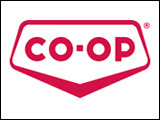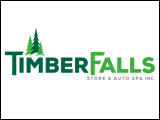Despite the apparent temporary return of winter in recent days, our yards are starting to turn green, and bags of yard waste from spring tidying have begun appearing at the curb for pick up on garbage day. It won’t be long before bags of grass clippings line the streets again. These bags of organic yard waste contain nutrients that the grass and other plants have taken up from the soil and air as they grew, and once they are transported to the landfill, those nutrients will breakdown in the landfill creating nutrient rich leachate and methane gas (a greenhouse gas), which have to be managed carefully.
Leaving bags at the curb may seem like the cheapest and most convenient option for homeowners, because they don’t pay the costs directly. However, this is a classic case where the costs of a practice are not born by the individual but instead born by Steinbach taxpayers as a whole, and society at large. First of all, there is the cost of curb-side collection. Then there is the cost of managing the landfill. I am told that 2/3 of the garbage we have in the Steinbach landfill mountain is organic. Managing that decaying organic waste so it does not pollute is a challenge, and, this organic waste significantly shortens the space available and hence the life of the landfill.
Is that really the best we can do? Or is there a better way to manage this waste?
Let’s consider a few options available to Steinbach residents that keep garden waste out of the landfill.
Option 1: Lawn Mulching
This regimen mimics nature most closely. The lawn is mowed regularly, but is mowed in such a way that the organic cuttings are mulched and stay on the lawn where they decay, returning taken-up nutrients to the lawn. This way of looking after the lawn requires the least effort and is the most environmentally friendly. Equipping your lawn mower with a mulching blade (readily available for less that $25.00) makes this easier. When this is done right, the lawn is healthy and welcomes the humus this adds to the soil.
Option 2: Bagging and Home Composting
This means collecting the grass clippings and adding them to a compost bin with other garden waste and even kitchen scraps. The resulting rich composted material can be spread on the lawn, returning the nutrients and feeding the grass plants. This option is considerably more work than Lawn Mulching (option 1), but has similar benefits for the grass. Compost bins come in many designs, and the City of Steinbach has, at times, sold composters at a subsidized price.
Option 3: Bagging and Delivering to a City of Steinbach Collection Point
This option means collecting grass clippings and disposing of them at the landfill in the ‘green waste’ bin, or in special collection points set up round the city during summer. The City then takes this waste and turns it into compost through a large-scale composting process. The compost is used by the city for city landscaping and at times may also be picked up by city residents for use in their yards. Although this option is cheap for the homeowner, City labour and equipment is involved, so this practice adds more to the City tax burden than Home Composting (option 2).
I challenge you to try one of the three options above this year, and help do your bit to improve our lawns, reduce the landfill mountain, and save Steinbach tax dollars.
Are you with me?



